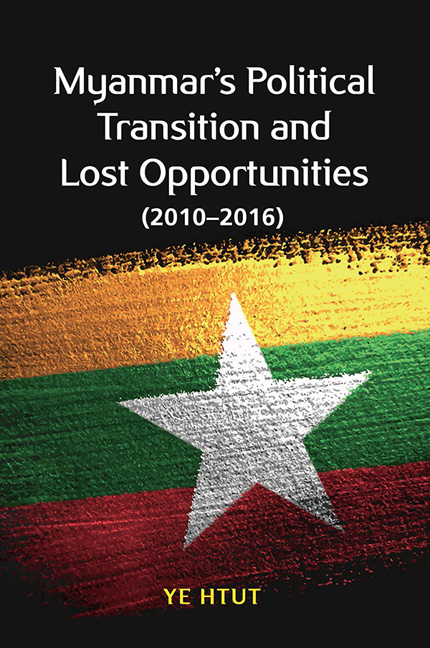Book contents
- Frontmatter
- Contents
- Foreword
- Acknowledgements
- Introduction: Myanmar's Political Reforms
- 1 The National Convention
- 2 The Constitution
- 3 The Union Solidarity and Development Party
- 4 Myanmar Spring and Aung San Suu Kyi
- 5 The Union Government
- 6 The Government and the Parliament
- 7 Shwe Mann's Checkmates
- 8 Turning Points
- 9 Media Reform
- Epilogue
- Appendix A President Thein Sein's Inaugural Address
- Appendix B President Thein Sein's First Address to the Cabinet
- List of Interviewees
- Index
- About the Author
- Plate section
- Frontmatter
- Contents
- Foreword
- Acknowledgements
- Introduction: Myanmar's Political Reforms
- 1 The National Convention
- 2 The Constitution
- 3 The Union Solidarity and Development Party
- 4 Myanmar Spring and Aung San Suu Kyi
- 5 The Union Government
- 6 The Government and the Parliament
- 7 Shwe Mann's Checkmates
- 8 Turning Points
- 9 Media Reform
- Epilogue
- Appendix A President Thein Sein's Inaugural Address
- Appendix B President Thein Sein's First Address to the Cabinet
- List of Interviewees
- Index
- About the Author
- Plate section
Summary
Provisions of the Constitution
The 2008 constitution of Myanmar set the parameters of President Thein Sein's reforms. The relevant sections are as follow:
Section 200:
The Union Government shall comprise the following persons:
(a) The President;
(b) Vice-Presidents;
(c) Ministers of the Union;
(d) The Attorney General of the Union.
Section 202:
The President, with the approval of the Pyidaungsu Hluttaw [Union assembly], may:
(a) designate the Ministries of the Union Government as necessary, and may make changes and additions to the ministries;
(b) designate the number of the Union Ministers as necessary, and may increase or decrease the number.
Section 203:
The President shall be responsible to the Pyidaungsu Hluttaw. The Vice-Presidents shall be responsible to the President and also to the Pyidaungsu Hluttaw through the President.
Session 224:
The Ministries of the Union Government shall, in carrying out the functions of their subordinate governmental departments and organizations, manage, guide, supervise and inspect in accord with the provisions of the Constitution and the existing laws.
Section 232(b)(ii):
In order to appoint Union Ministers, the President shall: obtain a list of suitable Defence Services personnel nominated by the Commander-in-Chief of the Defence Services for Ministries of Defence, Home Affairs and Border Affairs;
Section 232(i):
If the Union Minister is a representative of a Hluttaw, it shall be deemed that he has resigned from the day he is appointed as a Union Minister. Section 232(k): If the Union Minister is a member of any political party, he shall not take part in its party activities during the term of office from the day he is appointed as a Union Minister.
According to section 233, any Union minister may be impeached and removed by the Hluttaw and according to section 235(c) the president may direct any Union minister to resign.
The Formation of Thein Sein's Administration
Thein Sein, who was elected president at the Pyidaungsu Hluttaw session held on 4 February 2011, presented a proposal on 8 February for the formation of a Union government with 34 ministries and 30 Union ministers. During the Pyidaungsu Hluttaw debate over the list of ministries on 9 February, National Democratic Front (NDF) party representative Dr Myat Nyana Soe objected that there were too many ministries and proposed the number should be reduced to 25, but also proposed the establishment of a new Ministry of Ethnic Affairs.
- Type
- Chapter
- Information
- Publisher: ISEAS–Yusof Ishak InstitutePrint publication year: 2019

